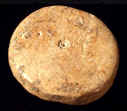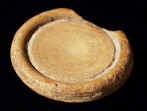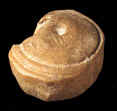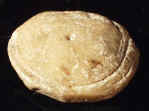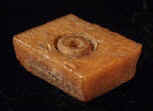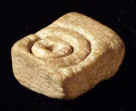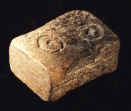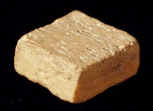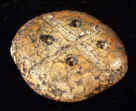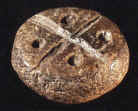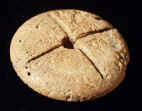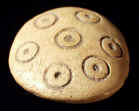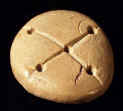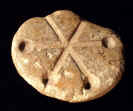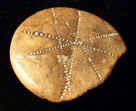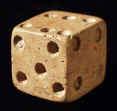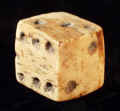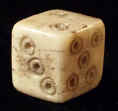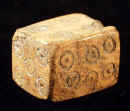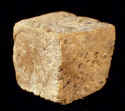ROMAN COUNTERS:
1054
ROMAN COUNTER OR THEATRE TICKET
I-II centuries A.D.
Bone disc with lightly incised ring with a dot in the center. On the other face the incised signs: XXL and three short wide lines below. H. 4 mm; D. 23 mm.
Similar bone discs with inscription: XIII I? in Egyptian Museum at Cairo; with inscription: III I? has been published in Corinth, X, The Odeum, p.141 and Davidson G.R. Corinth, vol XII, The Minor Objects. Princeton, 1952, p. 219; three plain discs with inscription: VIII H and IIII ? and VIII PA in Peters B. G. Processing of bone in Ancient States of Black Sea. Moscow, 1986, tbl. XVIII.
$ 300
BYZANTINE COUNTERS:
ROMAN DICE:
Pausanias stated that ancient Greeks played dice since the Trojan War. Tessera had numbers on each side from 1 to 6. In Roman times and later, values placed on opposite sides add up to seven. Talus had only four numbered sides: 1, 3, 4, 6. The best throw was venus: all four tali fall to expose different numbers; the worse throw was canis when all exposed numbers are the same.
See: Paus., II, 20,3; X,31,1; Aeschin. Contra Timarch., 59; Robinson, Excavation at Olyntus, X, p. 504, note 78; Suet. Aug., 71 1-4; Amm. Marc., XXVII, 4, 28; Daremberg and Saglio, Dictionnaire, svv. Ludi, Latrunculi, Tessera; Pauly-Wissova, Realencyklopädie, s.v. Lusoria Tabula; Peters B. G. Processing of bone in Ancient States of Black Sea. Moscow, 1986, p. 88-90, tbl. XIX.

